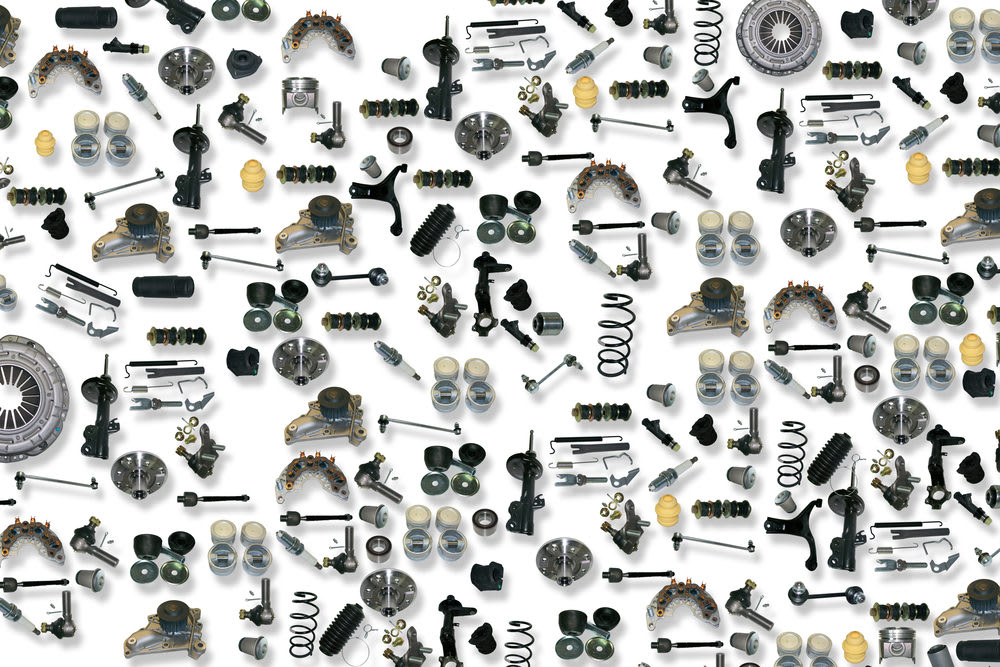

Have you ever wondered why a part varies in price from the dealership to the parts store on the street corner? Have you ever wished you could find less expensive parts to keep your vehicle maintenance costs down? Have you ever picked up two of the same part made by different manufacturers and wondered what the difference actually is?
The term "aftermarket" refers to parts that aren’t manufactured by the auto maker, while parts produced by the auto maker are known as Original Equipment Manufacturer, or OEM.
The reason for aftermarket parts
Aftermarket part development and manufacturing is almost always due to a large demand for a specific part. An example of such a part is an oil filter. Since every fuel-powered vehicle requires regular oil changes, aftermarket part suppliers manufacture an alternative choice to purchasing an oil filter from the car dealership’s parts department. The higher the volume demand for the part, the higher the number of aftermarket parts suppliers that will manufacture an alternative to the original equipment part.
How aftermarket parts compare with original equipment
You will find differing opinions on aftermarket part quality, and for good reason. Aftermarket parts are built as an option for vehicle repairs. The option can be for better warranty, better quality, less expensive, or sometimes simply because it’s available while the dealership is out of stock or backordered on the part. The reason for using an aftermarket part is as individual as the person buying it. Comparing aftermarket parts to original equipment is difficult because there are so many purposes.
Benefits of aftermarket parts
Warranty: Consider the warranty on the part. Most original equipment parts come with a one year warranty with a specified mileage, often 12,000 miles. Aftermarket parts can come with a variety of options from final sale to lifetime warranty with everything in between. If longevity and future costs are your consideration, you may want to opt for the part with the longest warranty. If you are planning to dispose of your vehicle shortly, the most economical option is likely your choice regardless of its warranty term.
Quality: Manufacturers of aftermarket parts often offer different grades of the part, like in the case of brake pads. You will be able to pick from a good-better-best selection with prices increasing with the quality. Expect that the warranty on the best part will also be the top-rated, because the manufacturer is willing to back their top quality product with the best warranty.
Availability: Because there are many more aftermarket parts suppliers and stores than car dealerships, you can expect that the part you seek will be available from at least one of them. A dealership is limited on how much stock they can carry, and how much of a high-demand part the auto maker will allot each parts department. An aftermarket parts supplier isn’t limited in the same way, so often the high-demand part the dealership is out of stock on will be on the shelf at an aftermarket parts supplier.
Options: In some cases, like suspension parts, an aftermarket part supplier will carry options the dealership parts department won’t have. Many original equipment front end components like ball joints don’t come equipped with grease nipples, where most aftermarket options do. Dealership parts departments don’t often have a strut and spring assembly available, and the components have to be purchased individually, resulting in a higher parts cost and higher labor cost. Aftermarket suppliers offer a “quick strut” assembly with the spring and strut together, complete with the mount, which results in less replacement labor and usually lower parts costs.
Price: The cost of your replacement part isn’t always the most important factor, but it nearly always plays some sort of a role. When selecting a replacement part, aftermarket parts have a reputation of being less expensive for similar quality. This isn’t always the case, and you should always check pricing from multiple sources to make sure you are getting a fair price. You may notice the dealership’s parts department offers the same part for a lower price, but consider the warranty on the part. Likely you’ll notice the aftermarket part will be years longer than the dealership’s, and sometimes even a lifetime warranty. In those situations, a higher priced aftermarket part may be the best option for you.
Potential aftermarket part issues
Although aftermarket parts can be an excellent alternative for vehicle repairs, there are a couple of things to watch out for with their use.
Warranty conflict: If you have a newer vehicle and your car still has factory warranty, installing an aftermarket part or accessory can void part or all of your warranty. Most often, the only part that is affected by a warranty restriction is the aftermarket part that was installed and not your whole vehicle. The reason the warranty is voided for that system or part is because it is no longer an original equipment part that is installed, taking the onus off the manufacturer for repairing it.
Manufacturing quality: Some aftermarket parts are less expensive because they are manufactured to a lower standard than the original equipment parts. As examples, a metal part may use a higher recycled content or a sensor may not be as tolerant of high heat. Some aftermarket parts may be prone to failure prematurely because of a lower quality of materials or manufacturing.
When it comes to replacement parts for your vehicle, consider all the options. Aftermarket parts are competitively priced, with warranty and quality options you can select for your individual needs.



